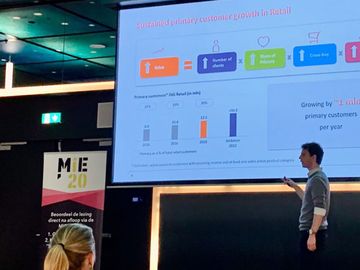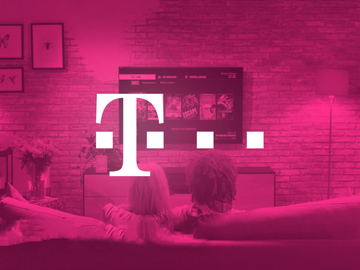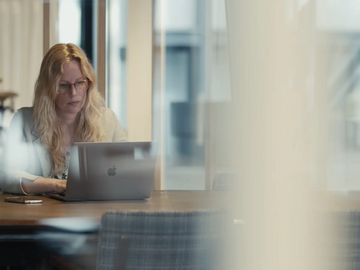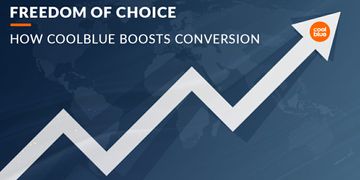
Adding value with freedom of choice: How Coolblue boosts conversion
In my article Navigation lessons from Dutch retailers bol.com and Coolblue, I took a closer look at the phenomenon of choice overload. I described in four key takeaways how Coolblue and Bol.com help guide consumers through thousands of products to find exactly what they’re looking for.
The “less is more” principle is an important factor here: the fewer choices, the easier it is for consumers to make up their minds.
So, based on that principle, you’d think that offering as few choices as possible is simply the right way to go as an e-retailer. If less is actually better, then why would you even bother with offering a wide range of choices? If only it were that easy…
What you also have to realize is that consumers want to feel in charge. They want to feel like they have the freedom to decide for themselves and that they have a wide range of options at their disposal.
In this article, I’ll show you how Coolblue gives consumers precisely the feeling of autonomy that they desire. And I’ll discuss the psychological marketing theories behind their approach. You’ll learn the basics of the following theories, which we will discuss using some real-life examples:
- The single option aversion effect
- Take-it-or-leave-it mechanism
- Extreme aversion bias
- Hobson’s +1 choice effect
- Decoy effect
To map out the consumer’s decision-making process, WUA conducted a study in October 2020 which examined customer experience among the largest retailers in the Netherlands. A total of 400 consumers took part in the survey. Each participant was asked to shop for a new TV online and to evaluate four different online shops in terms of their customer experience. Coolblue was the best-rated retailer among the participants. Part of their success lies in the wide range of options that they present to customers.
Single option effect: One choice = no choice
If consumers are presented with only one option, the single option aversion effect occurs. What this means is that, if there’s only one choice, then people tend to choose nothing at all.
Researcher Daniel Mochon conducted a simply study that shows how this works in real life. He asked three different groups of consumers if they would like to purchase a DVD player. The first group was given only one option: to purchase a Sony DVD player. The second group was also given only one option: a Philips DVD player. And the third group was given both options, which meant they had to make a choice between the two.
Only 9% of the consumers in the first group and 10% in the second showed any intention to make a purchase. In the third group, 32% chose the Sony DVD player and 34% chose the one from Philips. In other words, they were 650% more likely to make a purchase!
Whenever we’re confronted with just one option, it triggers the take-it-or-leave-it mechanism in our brain. We use all our mental energy to decide whether we want to buy the product or not. Yet, if we are offered two options, we use all our mental energy to compare the two. Instead of thinking about “taking it or leaving it,” we think about which option is best.
This effect is sometimes also referred to as the Hobson’s +1 choice effect. And this is a highly relevant point for online and e-commerce professionals: wouldn’t you prefer for your customers to be thinking about “which” product they will buy instead of “whether” they want to buy anything at all?
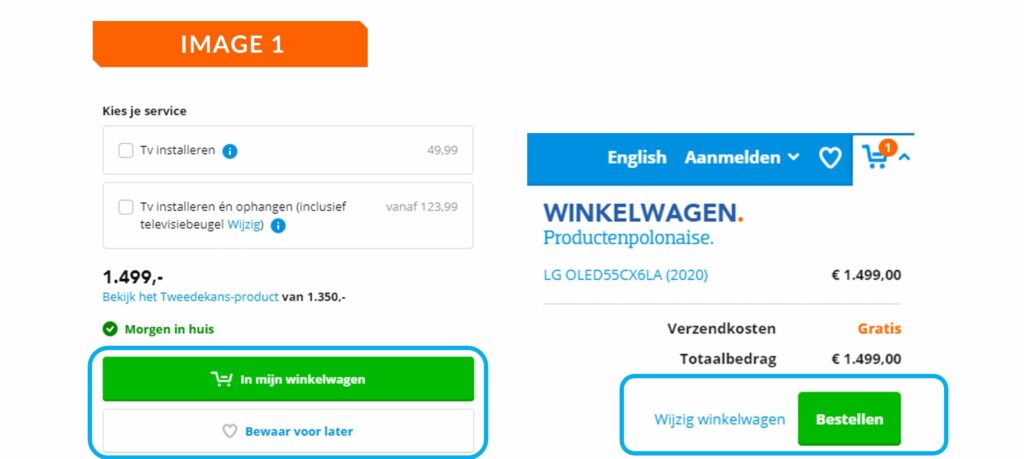
Coolblue uses the Hobson’s +1 choice effect in various places on their website. For example, in addition to the choice “Add to cart,” Coolblue also includes an option to “Save for later” beside each product, as seen in Image 1 above. Another example is that Coolblue gives the customer the freedom to choose between different delivery times (Image 2). By integrating the Hobson’s +1 choice effect, Coolblue ensures that consumers always feel like they have complete freedom of choice.
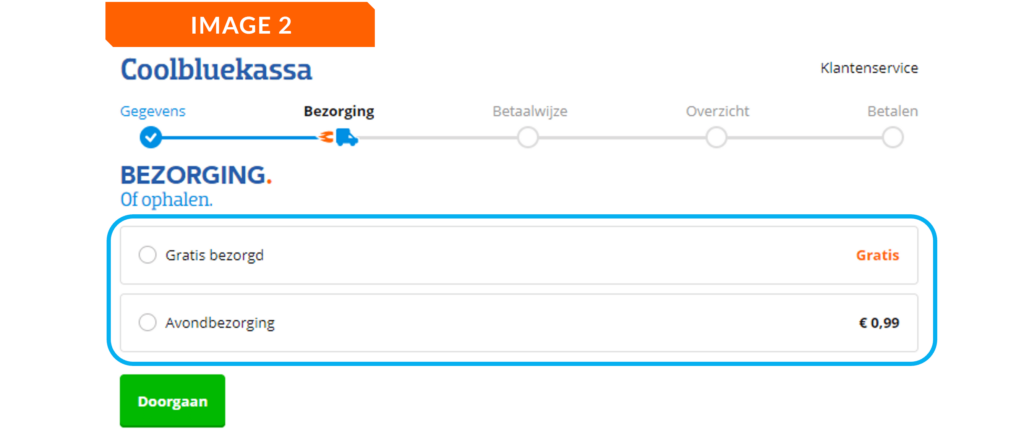
The added value of more options
Extreme aversion bias
Of course, Coolblue doesn’t stop with just offering two options. And that allows them to take advantage of the extreme aversion bias principle.
According to this principle, most people prefer to play it safe by avoiding extreme options. As a result, when presented with three or more options, most consumers choose the option closest to the middle.
Look at the suggestions offered by the Coolblue decision-making tool shown below in Image 3, for example. After the consumer enters three preferences, the tool narrows down the selection to three TVs. Because of the extreme aversion bias, most consumers will tend to choose the middle option.
So, by presenting the consumer with more than two options, retailers can actually make the decision-making process easier. Consumers then have the option of avoiding extremes, which makes them more likely to actually make a purchase.
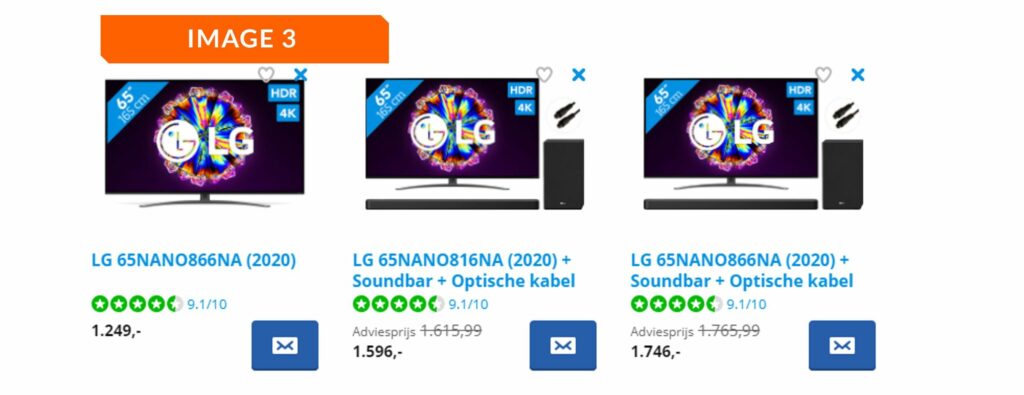
Decoy effect: Option 1
It’s also possible to use a third option as a so-called “decoy.” Offering a third option that is “asymmetrical” in comparison to the others has a strong influence on consumers. This effect is sometimes also referred to as the decoy effect.
There are two ways that you can use this effect. In the first scenario, you add a medium option. Suppose you are a coffee shop owner and you sell coffee in two different sizes. A small cup costs €1.20, and a large costs €2.50.
The large seems significantly more expensive, although it is also a bigger amount of coffee. Still, it’s difficult for the consumer to actual compare the two. Is the higher price really worth it? By adding a medium coffee to the menu, priced at €2.20, you make the large coffee suddenly seem like a better bargain (as shown in Image 4).
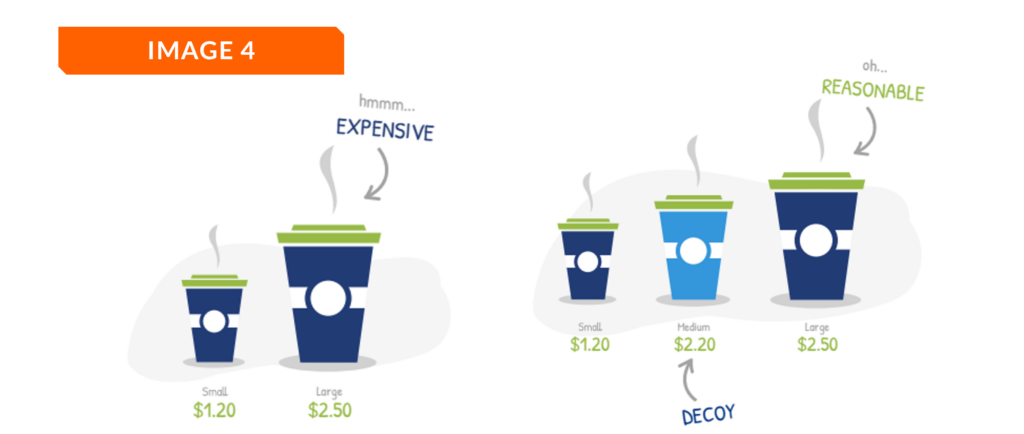
Decoy effect: Option 2
The second option for using the decoy effect is to add a third option that is disproportionately more expensive (Image 5). Suppose you own an online shop and you offer your customers three different price plans. The top plan, the ‘platinum’ plan has basically all the same features as the middle plan, the ‘gold’ plan, but comes at a much higher price. That makes the gold plan instantly seem like a much better deal. Consumers then feel like they’re getting a better bargain for their money in comparison with the more expensive third option. Despite its high price, the platinum plan only gives them a few extras, so consumers feel like they are saving money with the gold plan without compromising much on quality.
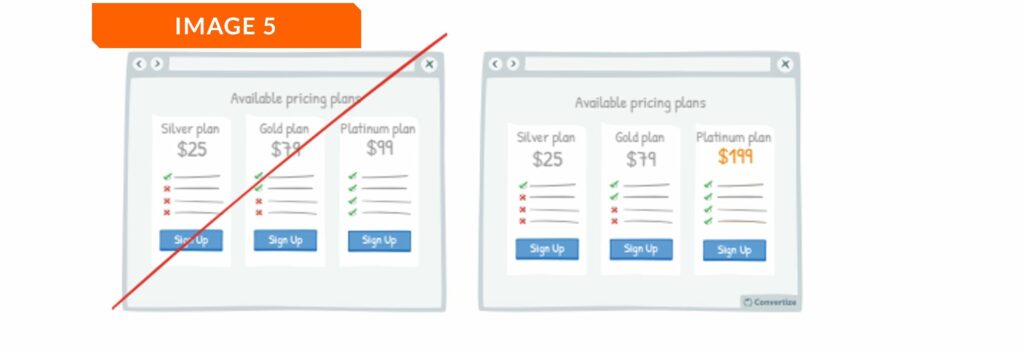
Conclusion: Tailor-made decision-making help
Coolblue’s approach to freedom of choice teaches us that the feeling of autonomy is very important to consumers. If there’s no choice to be made at all, then consumers feel like they have less autonomy, and they become less likely to buy anything.
Because of the Hobson’s +1 choice effect, consumers are more likely to actually make a purchase if they are presented with more than one option. Whenever Coolblue offers its customers more than two options, they use various tactics to encourage customers to make a purchase.
Extreme aversion bias ensures that most consumers will tend to choose the safe (middle) option. It’s also possible to offer an asymmetrical third option (a decoy) to simplify the decision-making process for consumers. Give the consumer the feeling of autonomy while also helping them to make a choice. By carefully using the Hobson’s +1 choice effect, extreme aversion bias and decoy effect, you’ll boost your conversion rate. Just remember: as with other conversion optimization techniques, you’ll need to run some A/B testing to figure out what works best for your website!
